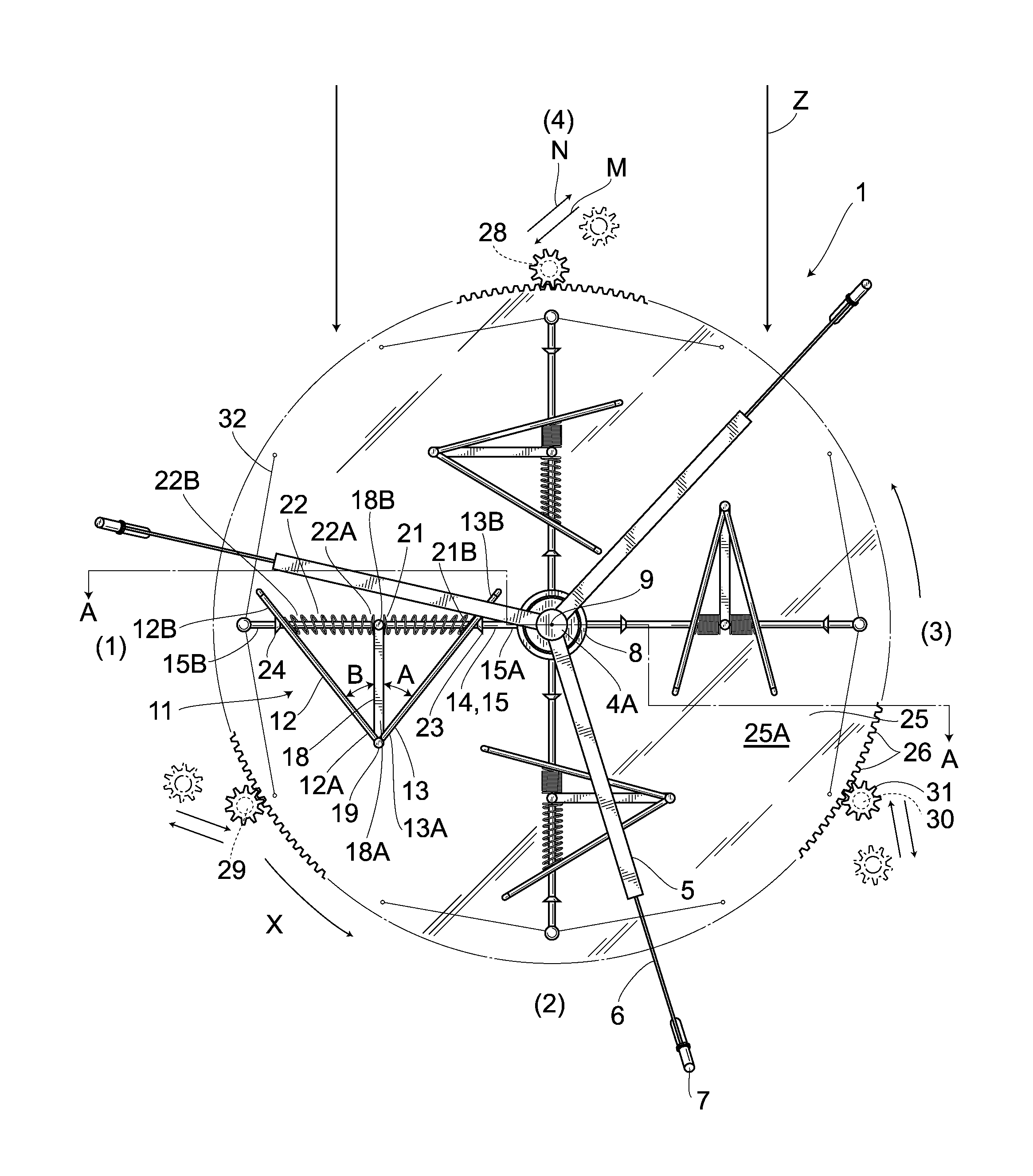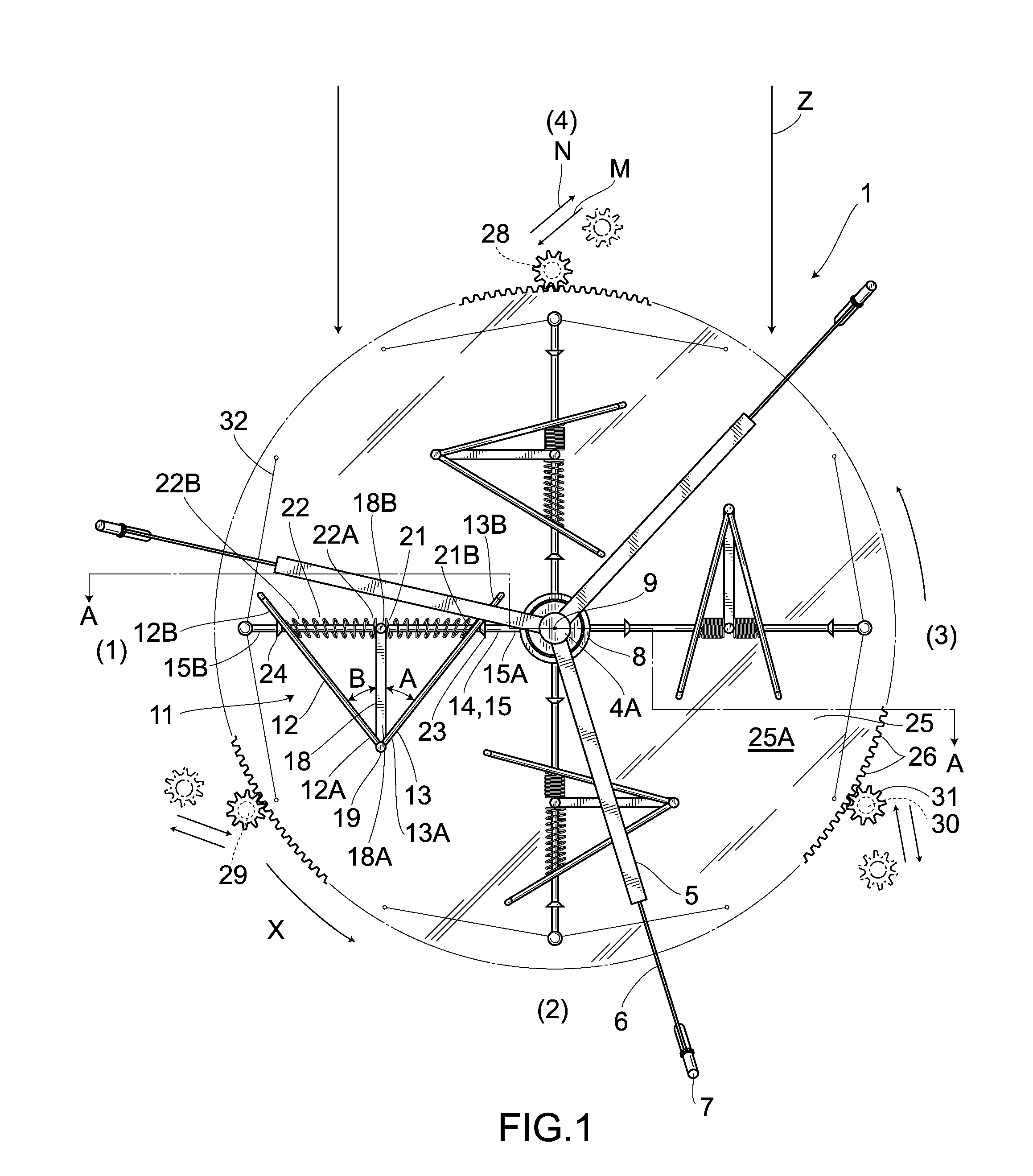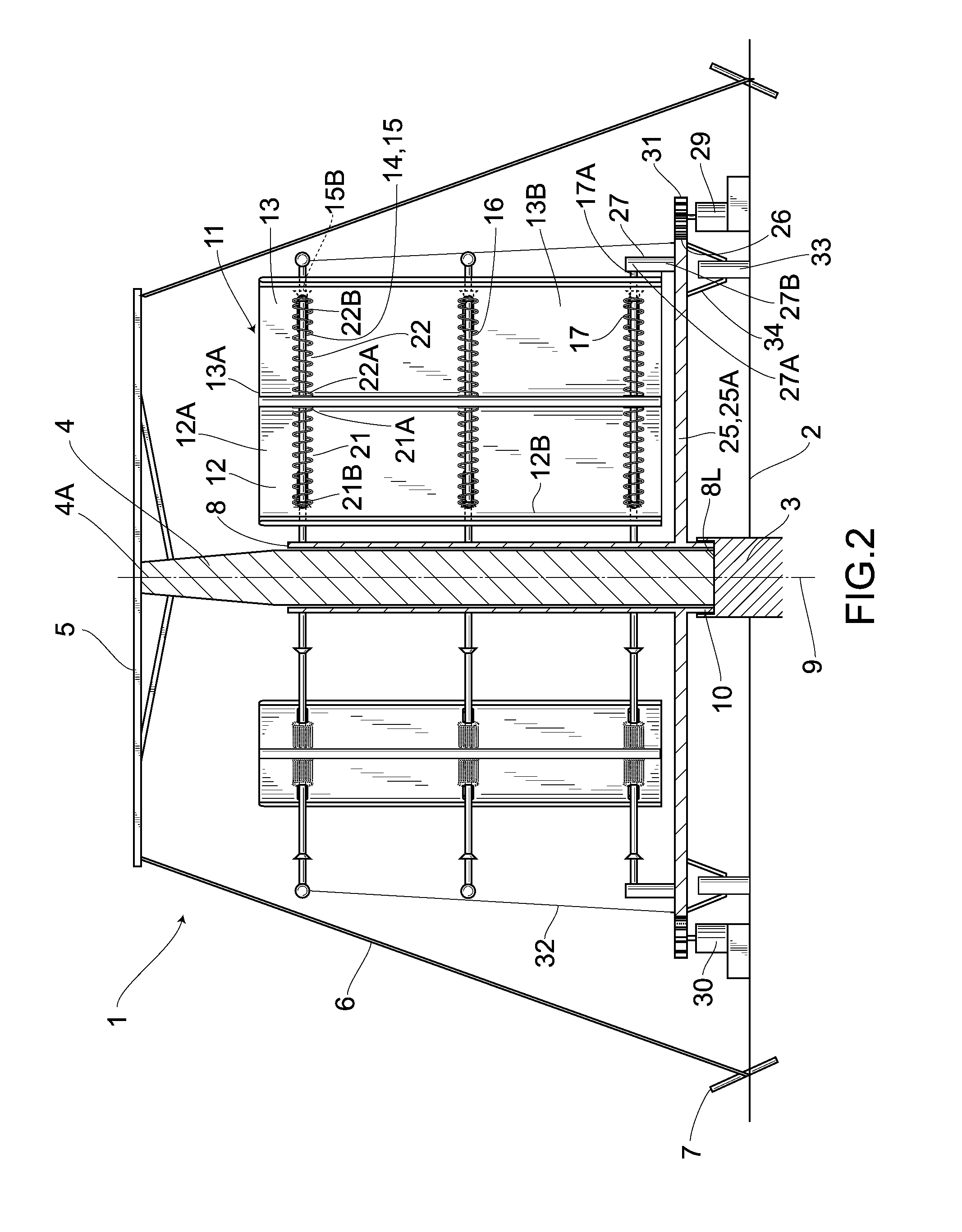Vertical axis wind turbine generator
a technology of wind turbine generator and vertical axis, which is applied in the direction of electric generator control, renewable energy generation, greenhouse gas reduction, etc., can solve the problem that the vertical axis wind turbine generator cannot stabilize the behavior of its own blade, and achieve the effect of easy deformation
- Summary
- Abstract
- Description
- Claims
- Application Information
AI Technical Summary
Benefits of technology
Problems solved by technology
Method used
Image
Examples
embodiment 2
[0059]Hereunder is a description of a different embodiment. In addition, the same numeral symbols are used for parts the same as in the foregoing embodiment and the detailed description thereof is omitted.
[0060]FIG. 8 shows the embodiment 2. In the embodiment 2, a first rotating shaft 8′ stands at the center of a rotating plate 61 that is rectangular in plane and is fixed to an upper surface of a speed increasing disc gear 25′. An intermediary portion in the longitudinal direction of a first arm 14′ provided radially from the first rotating shaft 8′ is provided in a circular-arch shaped manner so as to recede to a reverse direction to one rotating direction X′. The proximal portions 12′B, 13′B of divided blade plates 12′, 13′ are slidably provided on the first arm 14′. One end 21′A of a coil spring 21′ wound around the first arm 14′ is coupled to the divided blade plate 12′, while the other end 21′B is coupled to the divided blade plate 13′. Front edges 12′A, 13′A of the right-and-l...
embodiment 3
[0066]FIGS. 9 to 11 show an embodiment 3. The generator according to the embodiment 3 eliminates the support member 18 employed in the embodiment 1 to pivotally couple the front edges 12A, 13A of the divided blade plates 12, 13 only via the turnable coupling means 19. Then, one end 21″A and the other end 21″B of the coil spring 21″ wound around the arm 15 are coupled to the divided blade plates 12, 13, respectively.
[0067]Accordingly, as is the case with the embodiment 1, when wind in the wind direction Z blows from the windward side, the rear opening of the right-and-left pair of the divided blade plates 12, 13 comes to be opposed to the wind direction Z (a position indicated by (1) in FIG. 9), the inner surfaces of the right-and-left pair of the divided blade plates 12, 13 are subjected to the wind pressure and the divided blade plates 12, 13 is pressed by the wind pressure. As a result, the torque generated in the right-and-left pair of the divided blade plates 12, 13 is transmitt...
embodiment 4
[0070]FIG. 12 shows a fourth embodiment. As with the third embodiment, with the support member 18 eliminated, the front edges 12″A, 13″A of the divided blade plates 12″, 13″ are coupled only via the turnable coupling means 19 and one end 21″ A and the other end 21″ B of a coil spring 21″ wound around the arm 15 are linked to the divided blade plates 13″, 12″, respectively.
[0071]Then, the first and second divided blade plates 12″, 13″ are formed from a spring plate material made of spring steel. A symbol 12″K indicates a penetrated portion which is formed in the upper portion of the first divided blade plates 12″ and is used for the first arm 14 (first upper arm 15). This penetrated portion is formed horizontally long from a front edge 12A″ to a proximal end 12″B and therefore in planar view, the first and second divided blade plates 12″, 13″ are allowed to slide, in relation to the first arm 25, perpendicularly to the longitudinal direction of the first upper arm 15. Besides, a symb...
PUM
 Login to View More
Login to View More Abstract
Description
Claims
Application Information
 Login to View More
Login to View More - R&D
- Intellectual Property
- Life Sciences
- Materials
- Tech Scout
- Unparalleled Data Quality
- Higher Quality Content
- 60% Fewer Hallucinations
Browse by: Latest US Patents, China's latest patents, Technical Efficacy Thesaurus, Application Domain, Technology Topic, Popular Technical Reports.
© 2025 PatSnap. All rights reserved.Legal|Privacy policy|Modern Slavery Act Transparency Statement|Sitemap|About US| Contact US: help@patsnap.com



